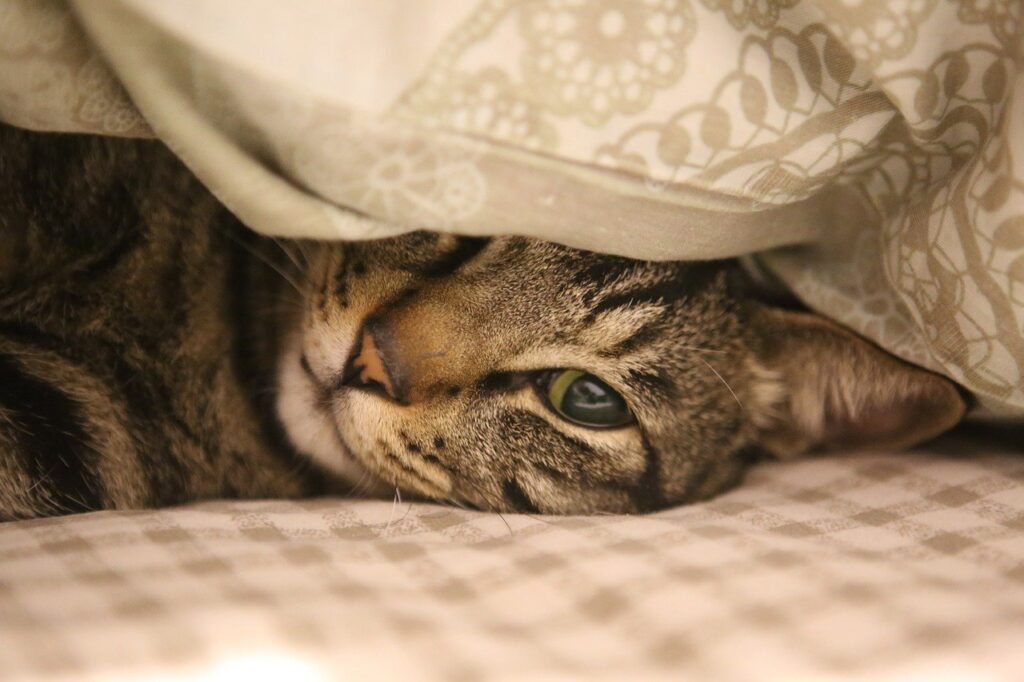All the Information You Need to Start a Happy, Healthy Home with Your First Cat
Bringing a feline into your house can be a thrilling and fulfilling experience. Cats are autonomous but caring friends who can bring happiness and pleasure into your life. But it’s crucial to realize that cats have special wants and behaviors if you’re a first-time cat owner. We’ll walk you through all you need to know in this guide, from prepping your house to understanding cat behavior, to make sure your new feline buddy has a seamless transition.
Getting Your House Ready for a Cat
It’s crucial to set up your living area before bringing your new cat home. Since cats are inquisitive and like to explore, keeping your house safe and pleasant is a must.
Create a Cozy Space
Your cat may become overwhelmed by the sights, noises, and smells when it first arrives. To make this transition easier, pick a peaceful location in the nook in your living room or bedroom. Include a nice and small bed or blanket, and ensure that your cat has easy access to its litter box, food, and water.
Cat-proof Your Space
Cats adore climbing, scratching, and hiding in tight spaces. Make your space cat-proof by fastening loose wires, eliminating dangerous plants, and putting away little things they could swallow. Make sure the windows are covered with screens if they are open.
Offer Scratching Posts
Cats naturally scratch to establish their territory and to maintain the health of their claws. To keep your furnishings from getting ruined, provide strong scratching posts and arrange them throughout the house.
Choosing the Right Supplies
A few key supplies that every new cat owner needs to have on hand are as follows:
Plates of Food and Drink
Select broad, shallow bowls for food and drink because they prevent their whiskers from rubbing against the sides. Otherwise, it can be pretty annoying for them. It is encouraged to use dishes made of ceramic or stainless steel because they are odor-resistant and relatively easy to clean.
Litter Box
For your cat’s wellbeing, it is essential that the litter box is kept clean and easily accessible. Ensure the litter box is big enough for your cat to move around comfortably and set it in a peaceful, low-traffic area. The majority of cats choose clumping, fragrance-free litter. To keep the box looking nice as new, clean it on a daily basis.
Snacks and Treats
Select premium cat food that matches your pet’s dietary requirements. Cats are obligate carnivores, due to which they need to consume meat. Seek for foods where the primary ingredient is animal source of protein. In moderation, especially during training or bonding sessions, you can also give treats to your cat.
Playthings
For your furry pet’s physical and emotional well-being, toys are essential. Your cat will be fascinated and involved with interactive toys such as puzzle feeders, laser light pointers, and feather waggler wands. To keep things intriguing, keep rotating the toys frequently.

Comprehending the Cat Behaviour
Cats and humans communicate in different ways. Learning to comprehend their behavior is vital for establishing a healthy bond.
Body Language
Cats are able to communicate their emotions through their body language. A contented cat will usually have a calm posture, gradual blinking, and gentle purring. A high tail conveys confidence, whereas an arched back or puffed-up tail suggests aggressiveness or panic. Keep an eye on your cat’s whiskers and ears as well since flattened or bent down ears may be a sign of discomfort.
Socialization
While some cats are inherently outgoing and friendly, some may need a longer period getting used to new people or settings. Allow your feline to come to you at its own pace; avoid pressuring them to interact. Treats and soft animals might be offered to foster good associations with you.
Playtime and Exercise
Because cats are innate hunters, even indoor cats require frequent playtime to satiate their predatory urges. Plan regular playtimes for your cat to help them burn energy and prevent behaviours associated with boredom, such as aggressiveness or clawing. Use toys, such feathers or little balls, that simulate the movements of prey.
Health and Grooming
Proper grooming, balanced diet, and routined veterinary checkups are all necessary to maintain the well-being of your cat.
Veterinary Care
Particularly during its first year, your cat should get regular appointments and vaccines at the vet. It is advised to spay or neuter in order to avoid unwanted litters and certain health problems. Even if your cat spends most of its time indoors, consult your veterinarian about parasite, flea, and tick prevention.
Grooming
Although most cats do a great job grooming themselves, you will still need to assist them. Regular brushing will minimize shedding and eliminate hairballs. Short-haired cats usually get by with a weekly brushing, but long-haired varieties may require frequent grooming. To prevent your cat’s nails from growing too long, clip them every couple of weeks.
Dental Care
Dental health is frequently overlooked, but it is essential to your cat’s general wellbeing. Offer dental candies and toys that encourage good mouth hygiene. Brushing your cat’s teeth with a vet-approved cat toothpaste can combat plaque accumulation.
Creating a Deep Bond
It may take time and care to develop trust and a close relationship with your new furry friend. Even though cats are independent creatures by nature, with the right attitude, they thrive on compassion and connection.

The Key Is Patience
It could take awhile for your cat to become used to its new surroundings and develop a bond with you. When your cat needs affection, offer it space and let it approach you. Forcing to interact can cause nervousness and tension within your cat, so avoid doing so.
Encourage that is positive
To reward good behavior, give food and praise—positive reinforcement. Rewarding your cat with treats and being consistent will help it learn new skills, such as using a scratching pole.
Quality Time Together
Beyond just feeding and cleaning your cat, are you spending enough time with them in a meaningful way? Playfully interact with your cat, give careful pet care, and speak to it in a soothing tone. Cats and humans can develop strong bonds, which are reinforced by setting aside time for them.
Common challenges and Ways to overcome them
Even the most experienced pet owner may find it hard when bringing home a new cat. The following are some typical problems and solutions:
Issues with Litter Boxes
There could be various reasons why your cat is house soiling. The cat litter box might be too tight for your cat, be too dirty, or be in a disruptive place. Make sure all the clumps are cleared out from the litter box, and placed in a clean and quiet location. Check your vet if the issue continues to rule out any possible medical concerns.
Furniture Scratching
Despite the fact that cats love to scratch, it can be a nuisance if they ruin the pieces in your home. Use deterrent sprays on furniture and have a sufficient number of scratching posts. Additionally, cats dislike any sticky texture. So you can apply double-sided tape to places where they typically scratch.
Shy or Fearful Behavior
It could take some time for a timid or scared cat to get used to new surroundings. Give your cat a safe spot to come to you at its own pace. Use relaxing pheromone sprays or diffusers to alleviate anxiety. Over time, calm surroundings and patience will allow your cat feel more secure.

